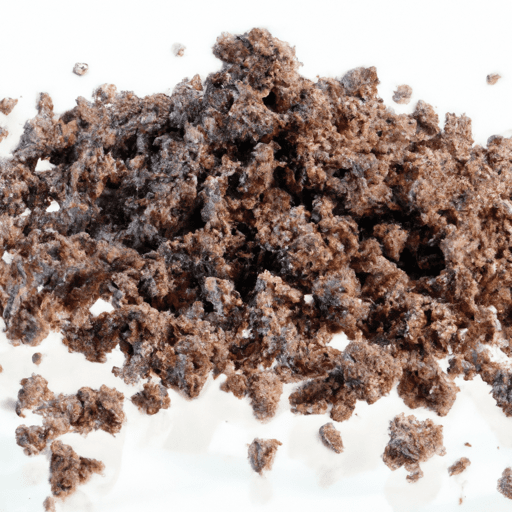All About Bran: A Nutritional Powerhouse
When it comes to healthy eating, bran is often hailed as a nutritional powerhouse. This humble ingredient is packed with essential nutrients, making it a popular choice for health-conscious individuals. In this article, we will delve into the world of bran, exploring its taste, common culinary uses, nutritional value, and uncovering some fascinating history and facts.
Taste and Texture
Bran, derived from the outer layers of grains such as wheat, rice, oats, and corn, possesses a unique taste and texture. Its flavor can be described as slightly nutty and earthy. In terms of texture, it has a coarse and gritty consistency, adding a pleasant crunch to dishes.
Cooking with Bran
Bran can be incorporated into various dishes, adding both flavor and nutritional value. Here are some popular culinary uses for bran:
1. Baked Goods
Bran is a fantastic addition to baked goods, providing a health boost while enhancing the taste and texture. It is commonly used in bread, muffins, and cakes. When incorporating bran into your favorite recipes, you may need to adjust the liquid content to maintain the desired consistency.
2. Breakfast Cereals
Many breakfast cereals, including well-known brands, feature bran as a star ingredient. Bran flakes and bran muffins are popular choices among those seeking a nutritious and fulfilling start to their day. By adding fresh fruits, nuts, or honey, you can further elevate the flavors in your cereal.
3. Coating and Binding Agent
Bran can also be used as a coating for various fried or baked dishes. It adds a delightful crunch and enhances the visual appeal of your creations. Additionally, bran can act as a binding agent in veggie burgers and meatballs, keeping the ingredients together while offering an extra punch of nutrients.
Nutritional Value
One of the reasons bran is highly regarded is its impressive nutritional profile. It is an excellent source of fiber, vitamins, minerals, and important antioxidants. Here are some key nutritional benefits of incorporating bran into your diet:
1. Fiber Content
Bran is rich in dietary fiber, which aids in maintaining a healthy digestive system. Fiber helps regulate bowel movements, prevents constipation, and contributes to overall gut health. Including bran in your meals can increase your daily fiber intake and promote a feeling of satiety.
2. Vitamins and Minerals
Bran contains a wide array of micronutrients, including B vitamins, magnesium, iron, and zinc. These nutrients play crucial roles in energy production, immune function, and maintaining healthy bones. By incorporating bran into your diet, you can provide your body with essential vitamins and minerals necessary for optimal well-being.
3. Antioxidant Properties
Certain bran varieties, such as rice bran, possess powerful antioxidant properties. Antioxidants help protect our bodies against damage caused by harmful molecules called free radicals. By including bran in your diet, you can support your body’s defense system and potentially reduce the risk of chronic diseases.
Interesting History and Facts
Bran has a rich history dating back centuries. In ancient times, it was often discarded during grain processing, considered a byproduct. However, as people became more aware of its nutritional value, bran started gaining recognition as a valuable ingredient.
In recent years, bran has gained popularity as a natural remedy to promote weight loss. Its high fiber content provides a feeling of fullness for longer periods, thus reducing the urge to snack between meals.
Moreover, bran has been widely used in animal feed due to its nutritional benefits. It is a common ingredient in livestock feed and has proven to be instrumental in supporting animal health and growth.
Bran offers a myriad of culinary possibilities while bestowing its numerous health benefits. From enhancing the taste and texture of baked goods to providing fiber-rich breakfast options, bran proves to be a versatile ingredient in the kitchen. Its nutritional value, from promoting digestive health to supplying essential vitamins and minerals, makes it a valuable addition to a balanced diet. Next time you’re looking to boost the nutritional content of your meals, consider adding some bran!
Origin: Bran is the hard outer layer of cereal grains, including wheat, rice, oats, and barley. It is formed during the milling process when the outer husks of the grain are removed.
Common Uses: Bran is commonly used as a dietary ingredient and can be found in various forms, including wheat bran, oat bran, and rice bran. It is often added to breakfast cereals, baked goods, and smoothies to increase fiber content.
Nutritional Benefits: Bran is highly nutritious and a great source of dietary fiber, vitamins, and minerals. It is particularly rich in insoluble fiber, which helps promote healthy digestion and prevent constipation. It also contains essential fatty acids, antioxidants, protein, and B vitamins.
Unique Properties: One of the unique properties of bran is its ability to absorb water, which can add moisture and bulk to recipes. Additionally, bran provides a nutty flavor and a slightly coarse texture to baked goods.
Historical Significance: Bran has been used for centuries and has a significant historical significance. In ancient times, it was often removed from grains during milling and used as animal feed. It was only in recent centuries that bran’s nutritional benefits for humans were recognized, leading to its increased use in human diets.




Use the share button below if you liked it.
It makes me smile, when I see it.